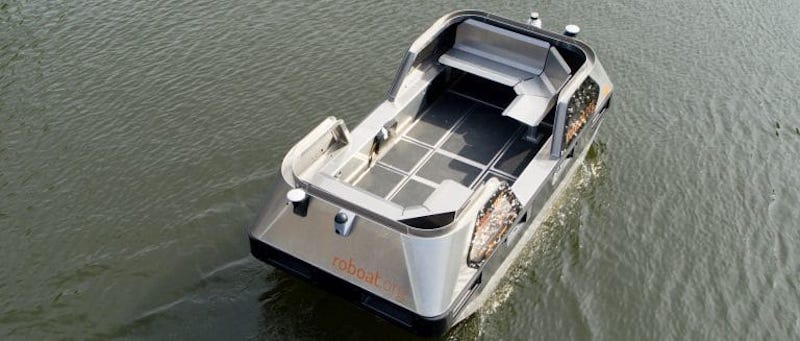MIT’s Autonomous Boat Technology Nearing Deployment in Amsterdam

In development since 2015, the Massachusetts Institute of Technology’s (MIT) fully autonomous electric boat could be plying the canals of Amsterdam as early as October.
Scientists from MIT’s Computer Science and Artificial Intelligence Laboratory (CSAIL) and the Senseable City Laboratory, together with the Amsterdam Institute for Advanced Metropolitan Solutions (AMS), have spent the past year testing two proof-of-concept full-scale Roboats that can carry up to five people, collect waste, deliver goods and provide on-demand infrastructure.
The fully electric boats can operate for up to 10 hours on a single charge and use GPS and a camera sensor system to determine a safe route between two points and avoid collisions with bridges, pilons and other boats.
Its universal hull design can accommodate various decks that are interchangeable depending on the use, similar to Ingenity’s 23E that debuted at the Miami International Boats Show last year. Roboats will be monitored and controlled from an onshore operations centre, with one technician controlling up to 50 Roboat units.

“We now have higher precision and robustness in the perception, navigation, and control systems, including new functions, such as close-proximity approach mode for latching capabilities, and improved dynamic positioning, so the boat can navigate real-world waters,” said Daniela Rus, MIT professor of electrical engineering and computer science and director of CSAILin Robotics and Automation News.
One feature is the boat’s futuristic latching mechanism that uses small cameras on the bow to guide it to a docking station, or other boats, when they detect specific QR codes.
“The system allows Roboat to connect to other boats, and to the docking station, to form temporary bridges to alleviate traffic, as well as floating stages and squares, which wasn’t possible with the last iteration,” said Carlo Ratti, professor of the practice in the MIT Department of Urban Studies and Planning (DUSP) and director of the Senseable City Lab.
The next step for Roboat is to pilot the technology in real world applications, which it will do in Amsterdam on 28 October.